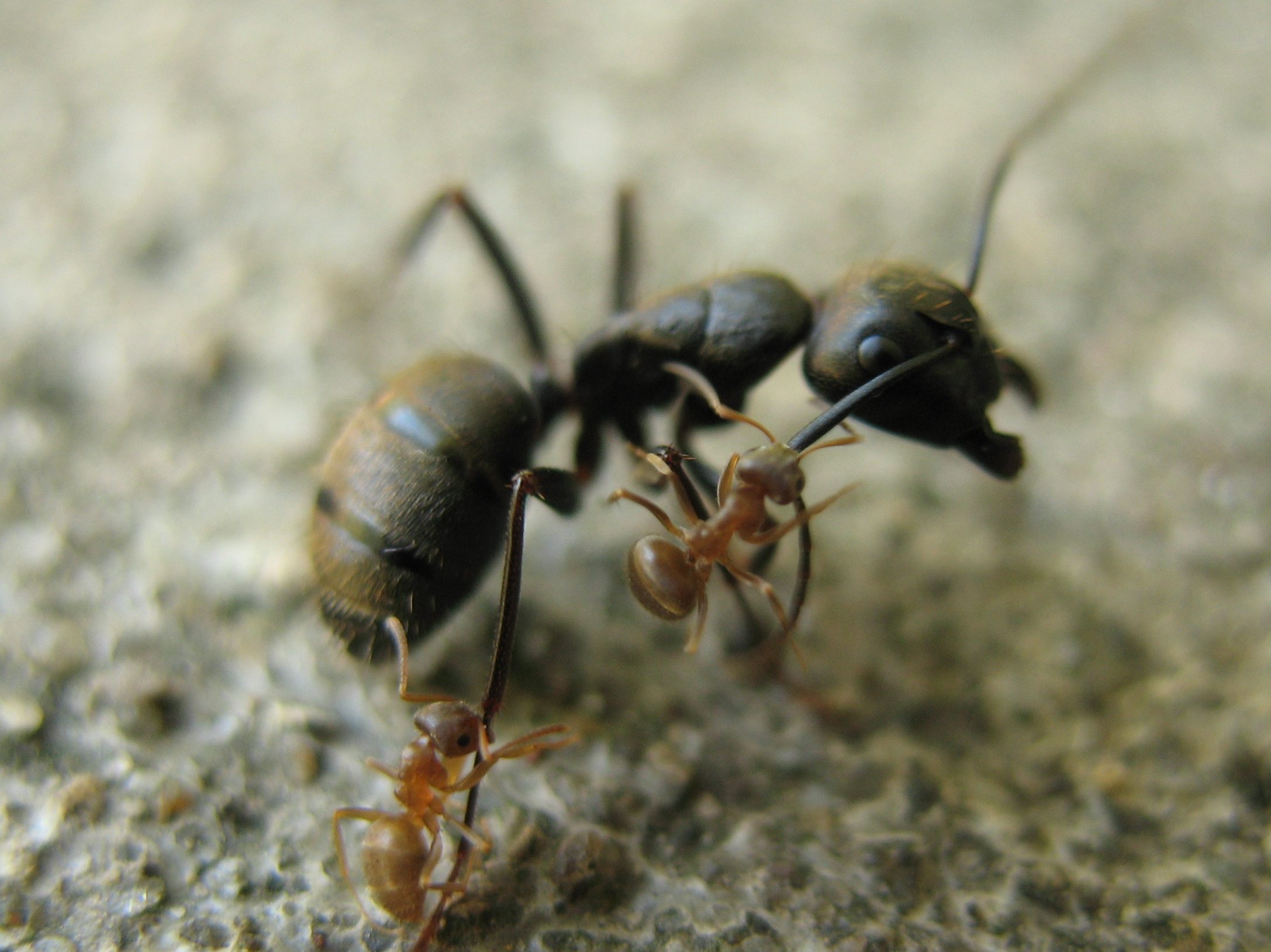
Ants are fascinating little fellows. Living in incredibly complex societies, these tiny creatures display a variety of intriguing behaviors. Their convenient size and relatively easy care make them good subjects for cultivated, indoors study.
Starting an Ant Colony
There are two routes the emerging ant-enthusiast may take with regard to the care of a colony. The first, easier, but considerably less rewarding path is to collect or purchase twenty or so worker ants (the wingless and common type seen running underfoot), and keep them in a purchased or constructed farm. These ants will last for a while, provided with protein and water, but not for longer than a few months. Without a queen to produce more workers, this “colony” will not survive past one generation. However, for the beginner, this is a good option because of it ease, and, if the farm is properly constructed, the observer will be able to witness the basic interaction and construction behaviors.
The second option is difficult, partly because it is seasonal. In the late summer months, (especially after rainfall), queen ants, newly mated and looking for a place to start a colony, can be collected. Queen ants are distinguishable from workers mainly by their overlarge abdomen. Queens tend to lose their wings after they mate, so a fertile queen usually, but not always, will be wingless. The wing muscles are a prominent lump at the base of the neck, and are another distinguishable feature. Once captured, a queen ant must be placed in a test tube, filled at the bottom with water trapped by a cotton ball. This will allow for a plentiful supply of water for the queen, who will drink by sucking on the moist end of the cotton ball. Wrap the test tube in tin foil (ants love the dark), and let it rest undisturbed to allow the queen to lay her eggs. A queen does not need food while she lays — she will live of the fat reserves in her wing muscles. If the ant you have captured is a queen, and she is fertile, within a few weeks she should start laying eggs. Once a fully matured worker is present in the test tube, connect the test tube by means of flexible rubber tubing either to a farm, or, if you do not care to watch the tunneling behaviors, simply to a shoebox that you may deposit food in.
Types of Ant Farms
There are a few factors to consider when thinking about the type of farm to use. In the first place, it must be decided whether the farm will be homemade, or purchased. Nearly all ant farms for sale nowadays use a special gel as a sediment that provides food and water for the ants, as well as digging material. This reduces actual care of the colony considerably. These farms also allow you to order ants along with it. These ants are usually harvester ants, which are exceptional for observation because of their large mandibles (mouthparts). Be warned: if you plan to collect your own ants for a gel farm, be sure they are large enough to shift the gel. Tiny ants will not have sufficient penetration to tunnel in the thick gel.
Gel-farms are often a good bet for the beginner. But when looking to minimize cost or simply for a fun construction project, a homemade farm can work just as well. There are a few design options here. The first and most obvious, similar to the gel farms, is simply a box of glass filled with sand and fitted with any sort of removable top, as in figure 1. It is important that the lateral faces of the enclosure are close together, so that the tunnels can be easily viewed. For this, as with any homemade farm, it is necessary to provide the ants with food and water. Moist cotton balls left in the farm until they dry work well for water, and dead insects are a favorite for food, though ants being omnivores, will eat most anything.
It is also possible to make a plaster nest with pre-carved tunnels. Add a glass cover for easy viewing, and keep your colony there. If you happen to have a plethora of corks and tubing, you can construct a network of corked jars, with the tubing acting as tunnels and the jars and chambers. Keep the tangle in a shoebox for easy transportation. Whatever design or method of ant care you choose to pursue, ants thrive best when provided with the proper environment and left to their own devices.
